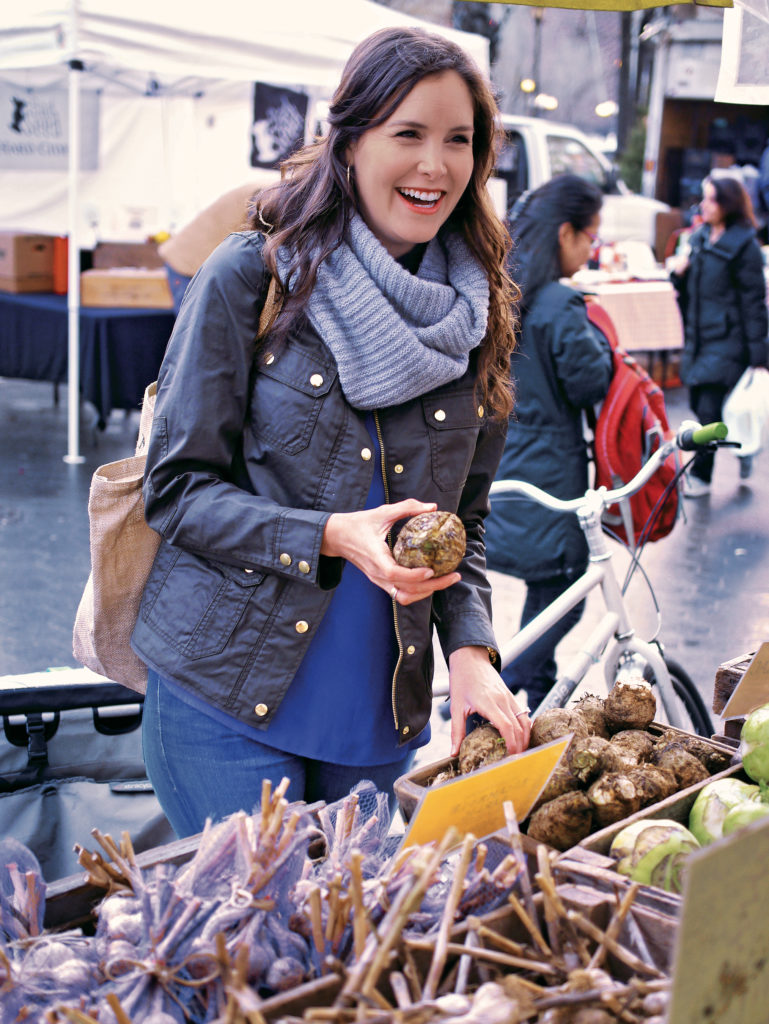Cara Mangini, author of The Vegetable Butcher shares 10 tips, tricks, and foods for thought on how to get to know your produce.

Matthew Benson © The Vegetable Butcher
Select Your Vegetables . . .
- Ever notice subtle, soot-like dust on your garlic? It’s mold, a telltale sign that the garlic is old. Avoid it as well as shriveled, soft, or hollow-feeling bulbs or sprouting cloves.
- Buy Brussels sprouts on the stalk when possible. The stalk continues to feed the sprouts, keeping them sweeter and fresher for longer. The best sprouts come to the market in the fall right after the first frost, which gives them their nutty, sweet flavor.
- Choose top-on carrots when you can (bright greens are an excellent sign of freshness) and use the greens in place of basil to make a simple, flavorful pesto.
Prep Your Vegetables . . .
- Don’t discard broccoli stalks—you paid for them! Instead, peel away the tough outside until you reach the tender, pale green center. Cut the centers into thin, even rounds or matchsticks and add them to any broccoli dish (they’re delicious in slaw).
- Make sure to always remove the green spots from potatoes, which contain a toxin called solanine that can be harmful in large doses. Also, try to buy organic potatoes, especially if you will be cooking and eating them with the skins on. Conventional potatoes have high levels of pesticides in the flesh and skin—even after washing.
- To revitalize limp greens, trim 2 inches off the stem ends and set the greens in a jar of water as you would a bouquet of flowers. Place the jar in the refrigerator with a plastic bag loosely covering the leaves for 10–20 minutes until they perk up.
- Remove garlic’s aroma from your fingers by rinsing them with water and then rubbing them against any stainless-steel surface, like the back of your knife.
- Prevent browning on cut vegetables such as artichokes, cardoons, celery root, peeled potatoes, salsify, scorzonera, and sunchokes by storing them in a bowl of acidulated water (water with the juice and rind of 1-2 lemon halves) until you are ready to cook them.
Consider Your Vegetables . . .
- Green bell peppers are usually red, yellow, or orange bell peppers that have not ripened fully. That’s why they lack the rich flavor of their warmer-colored cousins and can be so bitter. The same goes for purple peppers.
- The Jerusalem artichoke is often mistakenly believed to be in the artichoke family (understandably so) and was renamed “sunchoke” to avoid this common misconception. (To further complicate things, the sunchoke is actually a member of the sunflower family.)





No Comments